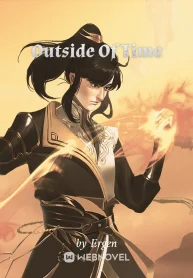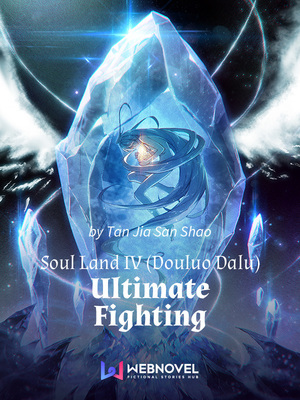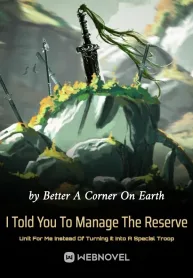For example, when conducting the trade, both sides would not want to be short-changed and be given techniques the net value of which were inferior to the techniques that they gave the other side.
That meant both sides needed to agree that the value of the techniques exchanged needed to be agreed to be equal by both sides.
This was where the complications arose.
For starters, what decided the value of a technique?
The Martial Union already defined the value of a technique objectively, using several parameters that it valued in a technique. Rui had already learned about it when he submitted the Pathfinder technique to the Martial Union.
The Martial Union judged the value of techniques based on four parameters; individuality, potency, difficulty, and dissemination viability.
Individuality was a parameter that was a measure of both uniqueness and originality. The value of a technique was low to the Martial Union if it had zero originality and zero uniqueness. It would mean that the Martial Union most likely already possessed such a technique in its vast database of techniques, and thus there was no point in purchasing the technique that was being offered.
Potency was a measure of how effective and impactful the technique was in combat in whatever field the technique was of. High-grade techniques excelled in the field they were in and produced much greater results than low-grade techniques. It was the foundation of the value of techniques.
Difficulty and dissemination value were both similar parameters that generally measured how difficult it was to spread a technique. The easier it was to spread a technique among Martial Artists, the more valuable the technique was, since such a technique would singlehandedly be able to increase the Martial prowess of the Martial Union.
However, it was possible that the G'ak'arkan Tribe had different conceptions of what was valuable in a Martial Art technique and what wasn't. It was entirely possible that what the Martial Union deemed to be junk was quite valuable to the G'ak'arkan Tribe.
Of course, it was unlikely that there would be drastically different values. At the end of the day, power was power. Power was what all Martial Artists sought, and was what set them on their Martial Path.
With that common value, it would be possible to come to an agreement in trade.
The problem wasn't the big picture, the devil was in the details. Being able to cleanly form a trade that both sides would be satisfied with was not going to be easy.
That was one of the things that the diplomatic team had to handle.
In this particular matter, Rui took the initiative to iron out the structure of the trade all by himself. Since he was a Martial Artist and a competent diplomat, he was by far the most qualified to work on this particular matter.
('Firstly, the trades need to be simplified. Rather than doing a singular large bulk trade of techniques, it is best to proceed with a large number of simple and smaller trades. Ideally, we can trade one technique for a technique that both sides agree is a fair and acceptable trade,')
Of course, Rui knew that it was not quite so simple. But it was definitely far simpler than if they tried to trade a group of ten techniques for another group of ten techniques.
('Of course, it is best to remain flexible, rather than forcing a one-for-one technique exchange rate. It's not bad to obtain two mid-grade techniques for one higher-grade technique as long as the net value on both sides is generally the same.')
What both sides would consider what comprised the value of a technique would need to be negotiated with the G'ak'arkan Tribe. But Rui was relatively sure that that was also manageable.
One thing that could potentially be problematic was the training of the Martial Artists of the G'ak'arkan Tribe in the techniques of the Martial Union. This was an issue that the Martial Union would not be able to easily solve.
For example, almost all of the training methodologies of the Martial Union were centered around specially developed training equipment, gear, machines, and facilities that were used to efficiently and effectively train the Marital Artists of the Martial Union.
What that meant was that for every technique that was traded to the G'ak'arkan Tribe, the Martial Union needed to ensure that it had the facilities, faculties, and resources needed for the Martial Artists of the G'ak'arkan Tribe to train and obtain the techniques of the Martial Union.
This was not simple, while the Martial Union settlement already possessed some training and sparring facilities and infrastructure, they were quite paltry and underdeveloped. The Martial Union would need to build the infrastructure needed and transport the supplies and resources needed for the settlement to be equipped with the many things needed to train the Martial Artists of the G'ak'arkan Tribe in their techniques.
Another issue that the G'ak'arkan Tribe might have would be the propagation of these techniques once the Martial Union left. Rui wasn't sure whether the Martial Union would choose to continue having a settlement on the island once his mission concluded, but even if they left, the G'ak'arkan Tribe needed to ensure that they could train their future Martial Artists in these techniques.
That was the biggest problem that the Martial Union would need to overcome. Of course, it wasn't as though training these techniques would be impossible without the training resources of the Martial Union, it would definitely be much more difficult. Maybe Rui would need to consult with some experts and provide them with the best training methodologies that are devoid of technology.
Though, given that the G'ak'arkan Tribe was used to training in this manner, Rui could be relatively confident that they would probably find a way to train their Martial Artists in those techniques regardless. They might be irked, however, to find that the way that they would be trained was not the way that their Martial Artists would be training it in the future.







